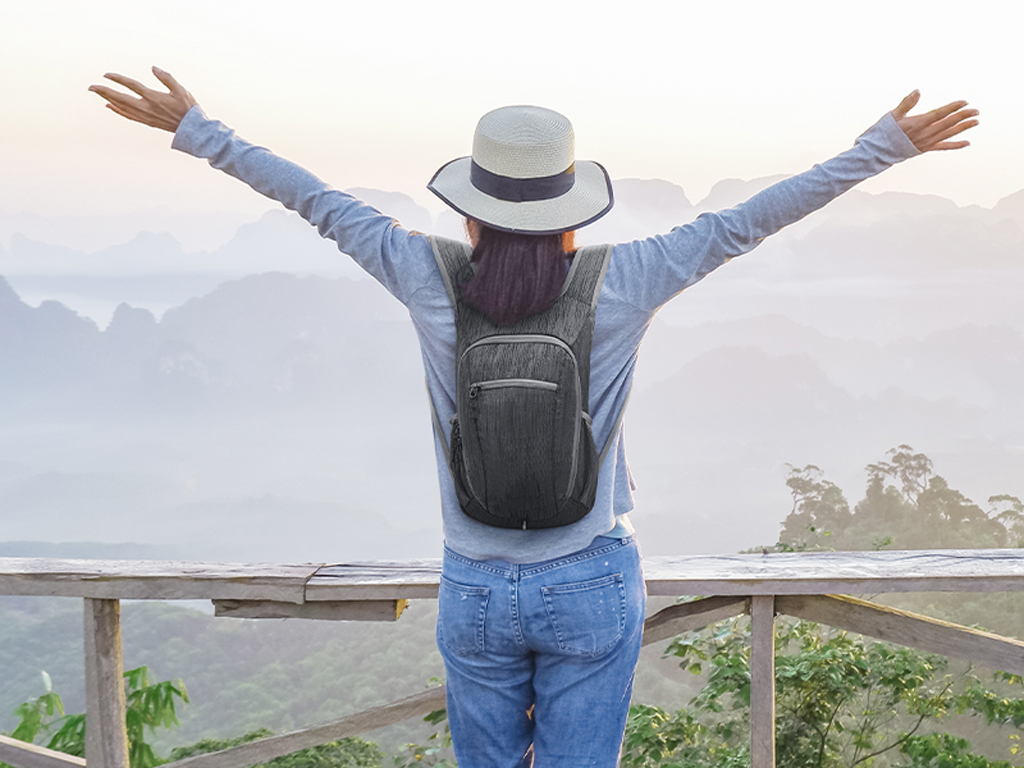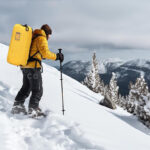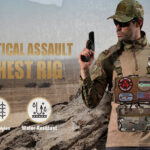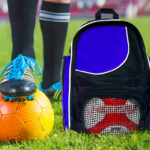Fabric Characteristics: The Foundation of Endurance and Comfort:
- Technical Specifications: Explore our selection of materials, including 600D Ripstop Polyester for lightweight durability, 1000D Nylon for unmatched tear resistance, and TPU-coated fabrics for superior water resistance. Understand the weave density, thread count, and environmental resistance ratings that make our fabrics ideal for different hiking conditions.
- Breathability and Weight: Delve into the science behind our breathable mesh used in back panels and shoulder straps, designed to reduce sweat and increase airflow, and how the weight of the fabric contributes to the overall load management and comfort during extended treks.
- Sustainability Focus: Detailed overview of our eco-friendly materials, such as recycled PET fabric, detailing the process from collection to production, emphasizing our commitment to reducing the carbon footprint without compromising on performance.
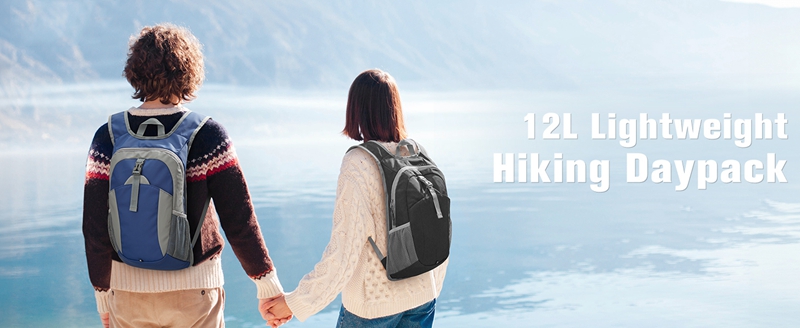
Functionality and Benefits: Designed with the Hiker in Mind:
- Ergonomic Features: Examine the ergonomic design principles behind our adjustable shoulder straps, hip belts, and sternum straps, including the types of padding, contouring, and adjustability options that ensure optimal weight distribution and reduce fatigue.
- Intelligent Compartmentalization: A closer look at the layout and design of main compartments, hydration sleeves, sleeping bag compartments, and tool attachments, explaining how each feature contributes to gear organization, accessibility, and protection.
- Innovative Safety Elements: Highlight safety features such as integrated whistle buckles, reflective material strips, and GPS tracker pockets designed to enhance visibility and ensure safety in remote locations.
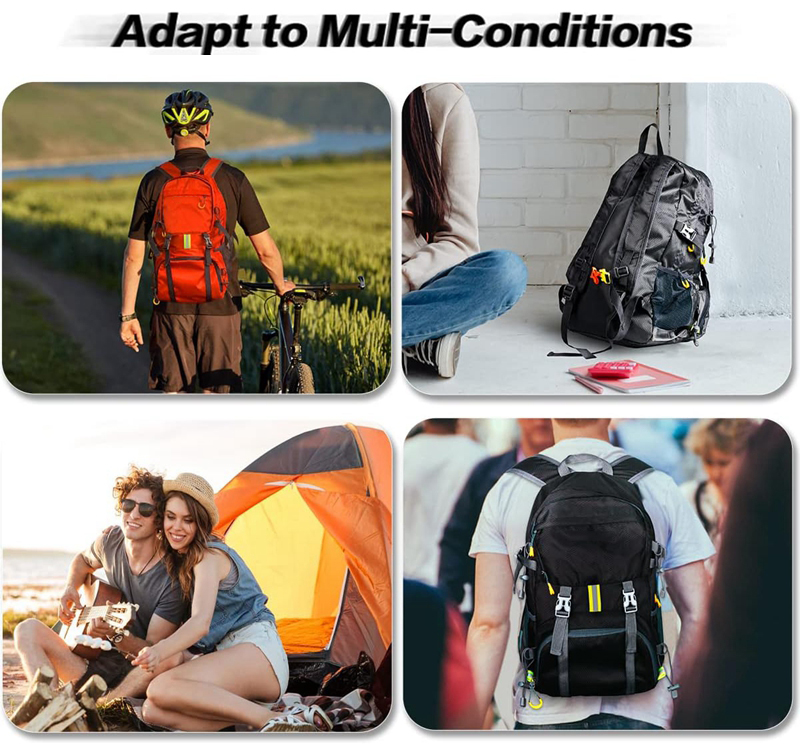
Usage Scenarios and Styles: Tailored for Every Terrain and Taste:
- Variety of Models: Detailed descriptions of different models ranging from ultralight daypacks for quick hikes to robust expedition packs for multi-day treks, including specific design features like expandable volumes, external gear loops, and weatherproof covers.
- Customization for Individuality: Showcase the array of aesthetic options, from classic earth tones for the traditionalist to bright colors and patterns for the trendsetter, including real-life images or customer stories to illustrate how personalization comes to life.
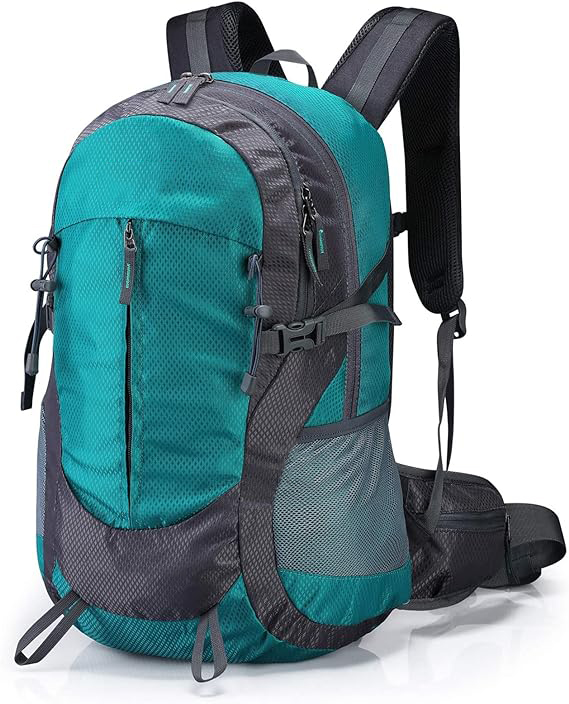
The Common Types Of Hiking Bags:
1. Daypacks:
- Capacity: Typically 10 to 30 liters.
- Intended Use: Best for single-day hikes, urban commuting, or short outdoor activities. Ideal for carrying essentials like water bottles, small snacks, a map, a raincoat, and a first-aid kit.
- Key Features: Lightweight construction; may include hydration bladder compartments, small organizational pockets, and breathable back panels for comfort.
- Design Variations: Available in various shapes and sizes, with options for chest and waist straps to stabilize the load during more active pursuits.
2. Hydration Packs:
- Capacity: Usually 2 to 10 liters, excluding water reservoir space.
- Intended Use: Designed for on-the-go hydration, suitable for runners, cyclists, and hikers who prioritize water access over carrying capacity.
- Key Features: Built-in hydration system with a reservoir (bladder) and a drinking hose; minimal storage for essentials like keys or a wallet.
- Design Variations: Some models offer additional storage space and external pockets, while others focus solely on sleek, compact hydration solutions.
3. Overnight Backpacks:
- Capacity: Ranges from 30 to 50 liters.
- Intended Use: Perfect for overnight trips or weekend getaways where you need to pack extra clothing, food, and basic camping gear.
- Key Features: Space for sleeping bags, pads, and tents; often equipped with external straps and pockets for additional gear. Enhanced back support and hip belts for carrying moderate loads.
- Design Variations: Varieties include different access points (top-loading, front panel access), sleeping bag compartments, and integrated rain covers.
4. Multi-Day Backpacks:
- Capacity: Typically 50 to 80 liters.
- Intended Use: Suited for multi-day hikes or longer expeditions where more food, water, clothing, and equipment are necessary.
- Key Features: Extensive storage options, adjustable straps for load management, and specialized compartments for organized packing. Often feature advanced suspension systems for comfort under heavier loads.
- Design Variations: Include options for men, women, and youth, with adjustable torso lengths and customizable fit systems to accommodate different body sizes.
5. Technical Packs:
- Capacity: Varies based on activity; generally around 40 liters for climbing packs to 60+ liters for alpine packs.
- Intended Use: Tailored for specific activities like climbing, mountaineering, or backcountry skiing, requiring specialized gear storage.
- Key Features: Attachment points for gear such as ice axes, crampons, and ropes; durable materials resistant to abrasion and tearing; streamlined designs to facilitate movement in challenging terrains.
- Design Variations: Climbing packs may feature removable components for versatility, while ski packs might include dedicated avalanche tool compartments and ski attachment systems.
6. Expedition Packs:
- Capacity: 70 liters and upwards.
- Intended Use: Designed for extended trips, remote expeditions, or situations where carrying large quantities of supplies is necessary.
- Key Features: Robust build for heavy loads, extensive pocketing for organization, and high-end suspension systems to distribute weight effectively. Often modular, with removable daypacks or top lids.
- Design Variations: Some models are optimized for specific environments like polar expeditions or jungle treks, with features like waterproof fabric or insect-proof netting.
Each type of hiking bag serves a distinct purpose and is designed to cater to different needs, from light day trips to heavy-duty expeditions. When selecting a hiking bag, consider factors such as the length of your trip, the type of activity, the amount of gear you need to carry, and your body size to ensure the best fit and functionality for your outdoor adventures.
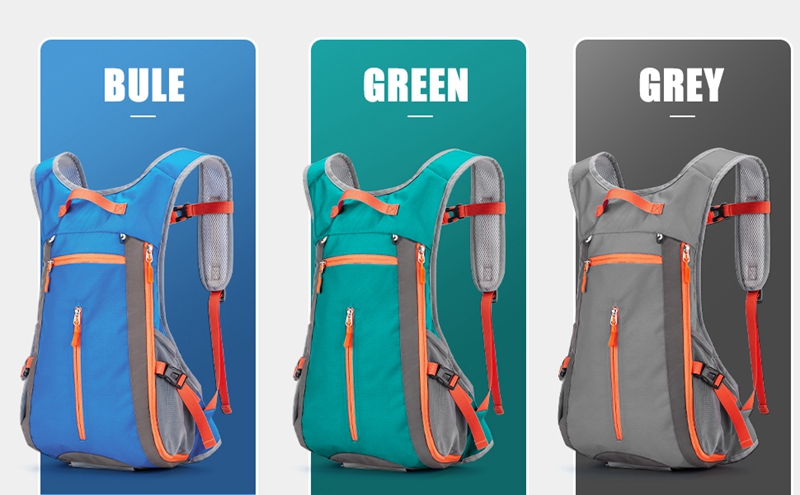
Detailed Customization Options for Oneier Hiking Bags:
1. Fabric Selection for Optimal Performance:
- Material Varieties: Offer an in-depth comparison between 600D Polyester, 500D Nylon, and Rip-Stop fabrics, focusing on their durability, water resistance, and weight. Discuss how each material can be coated with PVC or TPU for enhanced water resistance and durability, suitable for different hiking environments.
- Color Choices: Provide a palette of available colors, explaining how lighter colors can reflect sunlight and reduce heat absorption, while darker colors may hide dirt and stains better. Offer guidance on color combinations that maintain visibility but match natural surroundings.
2. Tailored Sewing Techniques for Enhanced Durability:
- Stitching Styles: Explain the difference between standard stitching, bar-tacking, and reinforced stitching, including specific scenarios where each is most beneficial (e.g., bar-tacking for stress points like strap attachments).
- Seam Construction: Detail the options for seam sealing, such as taped seams or welded seams, to prevent water ingress, particularly important for rain-exposed compartments.
3. Comprehensive Logo and Branding Customization:
- Logo Placement: Discuss optimal placement areas for visibility and aesthetics, such as the top flap, side pockets, or lower back area, considering the bag’s design and typical usage.
- Printing Techniques: Dive into the specifics of different printing methods:
- Screen Printing: Best for solid colors and larger logos; detail the process and longevity.
- Embroidery: Ideal for a premium look and feel; discuss thread options and dimensional effects.
- Heat Transfer: Suitable for detailed, multi-color images; explain durability and texture.
- Custom Tags and Labels: Options for personalized name tags, group identification, or emergency contact information sewn into the bag.
4. Advanced Color Customization and Pattern Integration:
- Pattern Options: Offer a selection of pre-designed patterns (camouflage for woodland trails, bright patterns for safety) or the ability to create a custom pattern.
- Mix and Match: Guidelines on combining base colors with accent colors for straps, zippers, and stitching to create a unique and personalized look.
5. Functional Customization Tailored to Hiking Needs:
- Compartment Customization: Detailed options for internal compartment segmentation, such as hydration pack sleeves, map pockets, or sleeping bag compartments, including size adjustments and access points.
- External Attachments: Choices of external loops, hooks, and straps for carrying trekking poles, ice axes, or other gear, including materials and load-bearing capacities.
- Closure Systems: In-depth look at various closure systems like drawstring tops, buckle-down flaps, or roll-top closures, including their ease of use and weatherproofing capabilities.
6. Ergonomic Features and Comfort Adjustments:
- Strap Adjustability: Detailed explanation of adjustable shoulder, chest, and waist straps, including padding options, materials, and mechanisms for a custom fit.
- Back Panel Design: Options for back panel construction, such as ventilated mesh designs or padded systems, tailored to user preference for comfort and sweat reduction.
7. Additional Features Based on Hiker Feedback:
- Specialized Pockets: Customizable options for insulated pockets for food, fleece-lined pockets for electronics, or hidden pockets for valuables.
- Integrated Technology: Possibilities for including built-in USB charging ports, solar panels, or LED lights for safety and convenience.
- Weather-Proofing Features: Details on removable rain covers, built-in storm flaps, and waterproof zipper upgrades.
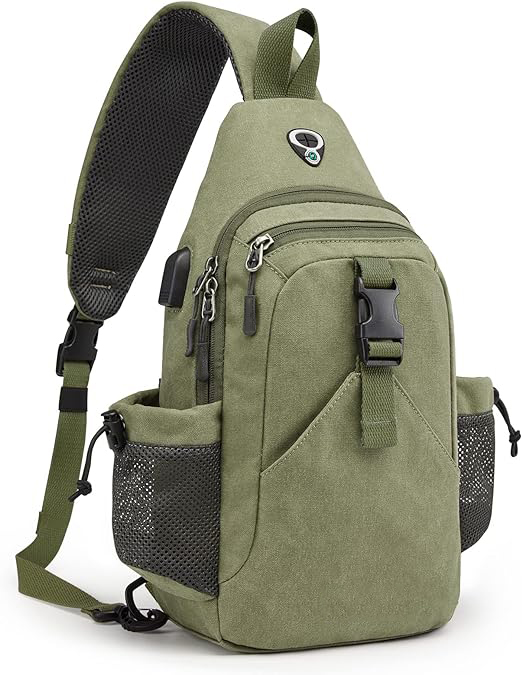
Oneier’s Competitive Edge: Why Choose Us Over Others:
- Innovative Materials: Showcase how Oneier’s use of cutting-edge materials and technology sets our hiking bags apart from conventional options.
- Custom Fit System: Explain our unique approach to providing customizable fitting options, ensuring that each hiker finds their perfect pack fit for maximum comfort and efficiency.
- Expert Craftsmanship: Highlight the skilled artisans behind each bag, emphasizing the attention to detail and quality that goes into every stitch.
- Customer-Centric Service: Detail our comprehensive customer service, from personalized consultations to post-purchase support, ensuring customer satisfaction at every step.
- Value Proposition: Break down the cost-effectiveness of investing in a Oneier hiking bag, considering its durability, functionality, and customization options.
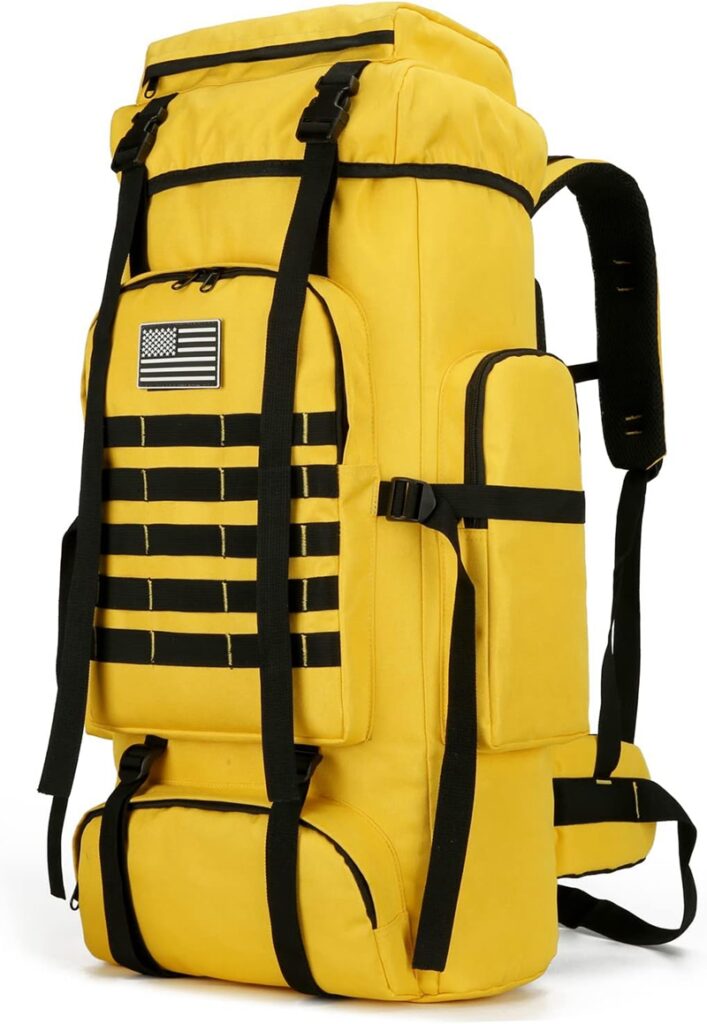
Your Perfect Hiking Partner Awaits
With Oneier, step confidently onto any trail knowing you have a hiking bag crafted to meet your specific needs and challenges. Experience the unmatched combination of durability, comfort, and personal expression on your next adventure. Are you ready to transform your hiking experience? Contact Oneier today to start designing your custom hiking bag,DIY hiking bag. Reach out through our website, direct inquiry, or WhatsApp for personalized assistance and embark on your journey with a bag that’s as unique as your adventure. Get A Free Sample Now

